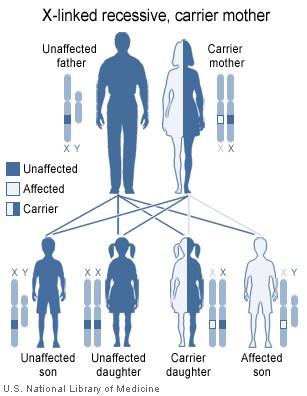Physicians currently diagnose fragile X syndrome -- the most common inherited cause of mental retardation -- by placing a patient's cells under a microscope and scanning for a nearly broken X chromosome whose tip hangs by a flimsy thread. Candidates for the test include not only the mentally retarded but also some healthy individuals who may be "silent carriers," capable of passing the disorder to their children or grandchildren. Unfortunately, the chromosome test spots only 70 to 80 percent of these carriers.
Now, U.S. and Dutch scientists have identified the specific gene involved in fragile X syndrome. Testing for mutations in this gene, they say, should improve physicians' ability to predict whether prospective parents risk having a baby with the disorder.
The researchers -- from Emory University School of Medicine in Atlanta, Baylor College of Medicine in Houston, Erasmus University in Rotterdam and Sylvius Laboratory in Leiden -- dubbed the gene FMR-1, for fragile X mental retardation-1. Although they have not yet discovered the gene's normal function, they note that certain stretches of FMR-1 are duplicated many times over in silent carriers and in patients with fragile X syndrome. The duplications disrupt the gene's message, just as repeating words randomly throughout a sentence would make it unreadable. The investigators presume that this disruption can somehow lead to mental retardation.
"This is an advance," says David H. Ledbetter, a Baylor geneticist not involved in the study. The test for the repeated gene "presents a better diagnostic strategy" than chromosome analysis, he says.
To identify individuals carrying the duplications, the researchers chopped up samples of their genetic material and sorted the bits according to length. People with the fragile X gene had extra-long fragments, a telltale sign of duplications.
"We think that repeat region expands by an amplification mechanism that we don't understand yet," says Stephen T. Warren of Emory, who directed the work. He suggests that the amplification makes the X chromosome more fragile.
Warren and his collaborators note in the May 31 CELL that the gene directs the production of a protein bearing multiple positive electrical charges. Because DNA is negatively charged, the protein encoded by this gene could bind to DNA, perhaps regulating other genes.
An understanding of the protein's action may one day point the way to a strategy for reversing fragile X syndrome, Warren says. This form of retardation affects 1 in 1,000 males and 1 in 2,500 females worldwide. Down's syndrome -- the leading cause of mental retardation -- affects 1 in 600 babies, but subsequent generations cannot inherit it.
Warren's team is now developing a faster screening test, using antibodies to the protein, for routine use in medical laboratories. Only academic medical centers and specialized genetic testing labs are equipped to undertake the complex procedure the researchers used in their study, he says.
COPYRIGHT 1991 Science Service, Inc.
COPYRIGHT 2004 Gale Group



